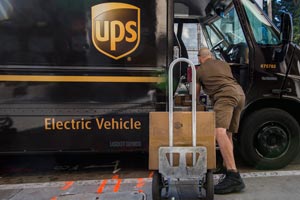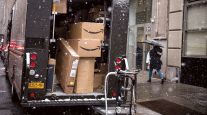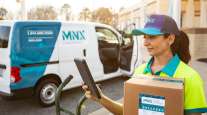UPS Expanding Package-Pickup Locker Program

UPS is adding 300 self-service package-pickup lockers across the country to solve a problem annoying both UPS and its customers: missed deliveries.
The move follows a successful pilot at nine Chicago stores that started in October 2014, UPS said June 30. The lockers are part of UPS' efforts to cut the cost of fulfilling increasingly insatiable online shopping habits while keeping up with all the ways customers want their packages delivered, said Kalin Robinson, UPS director of new product development.
"We were looking at trends in e-commerce telling us we're going to see more residential deliveries, which means there may be more unsuccessful deliveries, and that's frustrating for everybody," he said.
UPS has already installed 40 lockers and expects to have a total of 309 in place by the end of the year, Robinson said. New York, Pennsylvania, Virginia and Washington are also in the first group of states to get the lockers, UPS said.
UPS ranks No. 1 on the Transport Topics Top 100 list of the largest U.S. and Canadian for-hire carriers.
The lockers are meant to supplement UPS' in-store Access Point program, where businesses such as convenience stores, grocery stores, delis and dry cleaners agree to serve as a pickup spot in exchange for collecting a small per-package fee.
UPS has more than 8,000 Access Point locations in the U.S., including UPS stores.
In-store pickup makes sense in areas that handle only a handful of packages a day, but in spots that would see daily deliveries in the double digits, the lockers, for which UPS pays a flat rent, make more financial sense, Robinson said.
Members of UPS' My Choice delivery-management service can choose to have their packages sent to the lockers or leave packages for pickup. A UPS driver who decides it wouldn't be safe to leave a package outside the recipient's home can also redirect the package to an in-store Access Point or locker if one is nearby.
That means the driver isn't returning to try again the next day and can consolidate deliveries into a single stop at the locker, saving time and fuel, Robinson said. Customers pay the same fee whether the package is brought to their door, a retail access point or a locker, he said.
According to an annual UPS survey, most customers would rather get packages at home, but the share preferring another location — 35% — is up 9% over 2014. About 15% of people surveyed said they wanted to get their packages at the carrier's authorized pickup spot, a convenient retail store or a package delivery locker.
Robinson said the staffed Access Points and lockers can boost e-commerce business by making it easier for customers without good home or office delivery options to shop online and can benefit the retailers accepting packages by driving foot traffic.
Amazon has a similar locker program with multiple locations in Chicago, but Robinson said he doesn't see it as a competitor. Amazon and UPS deliver to each others' lockers and both have lockers at 7-Eleven stores but so far haven't been competing for real estate, he said.
"They're looking to benefit the consumer experience as much as possible, and that's what we want as well," Robinson said.




